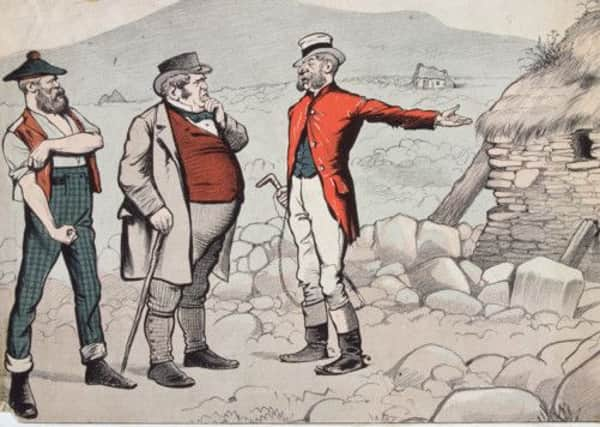Book review: A New Race of Men: Scotland 1815-1914


A New Race of Men: Scotland 1815-1914
by Michael Fry
Birlinn, 466pp, £25
THE “normal pabulum” of Scotland’s academic historians Michael Fry asserts, is “mechanised agriculture, steel production, housing problems and such matters”. This is just the first of many provocative comments with which Fry’s ambitious study of 19th century Scotland bristles. In fact only economic historians, a dwindling band nowadays, are guilty as charged, but no shame should be attached to their pioneering writing about the breathtaking rise of Scotland’s industries and the urban growth (and squalor) that accompanied this. Indeed notwithstanding his apparent disdain for economic and social history, Fry relies heavily in his early chapters on the work of its practitioners. That’s how history is written, even when it aspires to novelty. But there is nothing new in writing about the more positive achievements of Scotland’s Victorian towns, even Dundee, about which Fry either knows little, or has chosen to treat somewhat harshly.
Fry’s aim is to put culture – high culture – back into the history of Victorian Scotland. Although Graeme Morton has beaten him to the line on this (in Ourselves and Others, 2012), Fry’s more traditional, rounded account of the period is enormously welcome. Like Morton too, he has sought to focus on the often heroic achievements and lived experiences of human beings. Statistics are one of Fry’s bugbears.
Advertisement
Hide AdMore eye-catching is his claim that the traditional emphasis on socio-economic material has done the (Scottish) nation a disservice. Economic development in Scotland has been a process of assimilation into a greater UK entity. Yet in culture (and politics) Scotland in the past half century has been drifting apart from England.
Fry’s contention is that the roots of this divergence are long and deep. Whilst the astonishing material advances of the 19th century allied to the opportunities for Scots to succeed in the UK as well as through Britain’s global empire served to weaken Scotland’s indigenous culture (which even influential Scots doubted the value of), it survived. Today it is the nation’s distinctiveness, culturally and politically that partly underpins the movement for independence – Fry’s “new destiny”.
Fry’s book is encyclopaedic in its coverage. Apart from the subjects we’d expect to see – industry, agriculture, military service, class and the like, he bravely engages with race, religion and sectarianism, and sex. Fluent throughout, he has an enviable eye for detail. Described with hair-raising effect, for example, are the agonies of surgery pre-anaesthesia and the horrendous consequences of post-operative infection until Joseph Lister in Glasgow began to experiment on his patients with carbolic acid.
He excels too at drawing wider meaning from the local and particular. Thus in the final pages our attention is drawn to a plain gray octagonal column erected in the Fife village of Ceres in 1914, with its inscription commemorating not only the “vindication of Scotland’s independence on the field of Bannockburn” 600 years earlier, but also the part taken in that battle by the men of Ceres. Was this an aberration or is it evidence that even then there were “tenacious memories that could stir Scottish hearts with a desire to regain what the nation had lost in 1707?” Within weeks, men from Ceres would be on the march again, but this time to join the Black Watch and fight in the First World War. This, of course, is an instance of the well-known combination of concentric loyalties most Scots felt at the turn of the 20th century.
Elsewhere in Europe, Fry notes, material progress was accompanied by cultural confidence. But not in Scotland. What, he asks, had gone “wrong’”(culturally). The answer surely is nothing. Scots continued to be committed to Britain, provided Scotland was treated as an equal partner with England. Union, its underpinning values and the economic opportunities it had created, still had purchase. Pressures from Scotland for reform of Scottish government which had first been articulated by the Tory-led National Association for the Vindication of Scottish Rights (of which Fry is unduly dismissive) in the mid-1850s, had led in 1885 to the creation of the office of Secretary of State for Scotland. It was from this time the Union consensus began to break up.
Another legacy, identified by Fry in how the towns, cities and poor law boards managed their affairs, is an emphasis on localism, and an aversion to Westminster authority. There were Anglophile Scots and those who for other reasons had little interest or enthusiasm for things Scottish. Yet below the level of the elite there was palpable enthusiasm for Scotland’s language and the songs that the country’s 19-century secular saint, Robert Burns, had preserved, adapted and promoted. As Fry explains, even Queen Victoria did her bit to promote Scotland in the United Kingdom through the links she claimed with Scotland’s past, including Bannockburn. Ceres therefore was not alone.
Advertisement
Hide AdBut for most of the century there were more important issues for most Scots than Scotland’s past and its historical trajectory. Wealth creation was one of these. Also sought were individual rights, including the franchise. There was less concern for a nation many of whose citizens still believed they were freer by being inside the Union than without.
Inevitably historians will highlight flaws in Fry’s work, but this is compelling history. Many readers will relish his bolder assertions and acerbic one-liners. Others – mainly unionists – will be irritated by his cavalier swipes at the 1707 Union and its effects on Scotland. But not all robustly-marketed tomes that have tackled big themes in Scottish history are like this one: lively, provocative and a pleasure to read, from cover to cover.
• Christopher Whatley is Professor of History at the University of Dundee